Filton Abbey Wood: Crocodile and missile rumours at 'UK Pentagon'
- Published
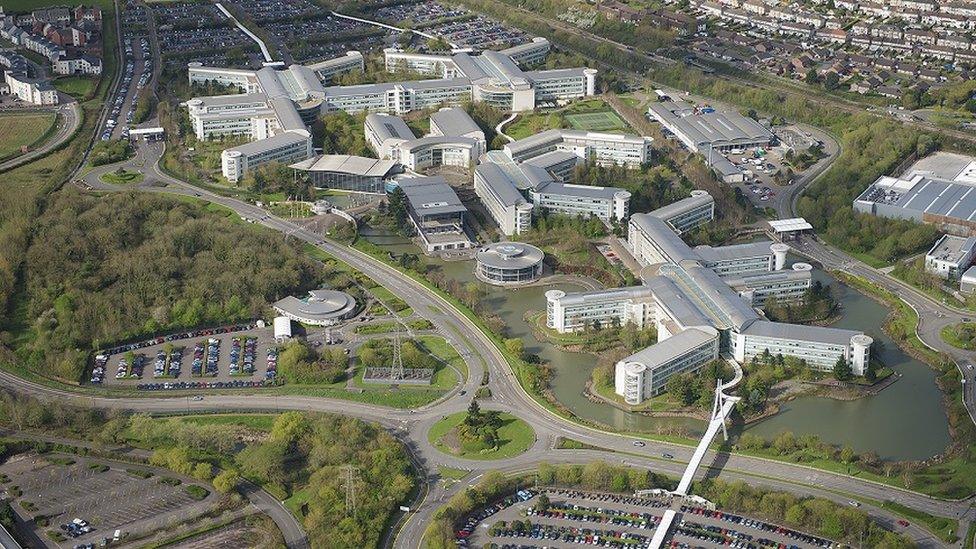
About 8,500 people work at the complex
Known to some as the 'UK's Pentagon' it has been 25 years to the day since the sprawling Ministry of Defence (MoD) complex at Abbey Wood in Bristol was opened.
The subject of rumours in its early days - including tales of crocodiles in the lakes and missile launchers - it was the biggest project of its kind in the UK in the early 1990s.
Prior to the pandemic, 8,500 people filed into the enormous complex to work in roles such as supplying kit to UK forces posted overseas and researching the latest military technology.
In the early 1990s Abbey Wood was one of a handful of places on a shortlist for the new MoD complex after the original list of 69 possible sites had been whittled down.
It was chosen ahead of Solihull, Sunderland and South Wales to be the site of the new base and was officially opened by The Queen on 19 July, 1996.
A muddy bank was covered in hessian sacks and painted green before the Queen arrived to give the site a finished look.
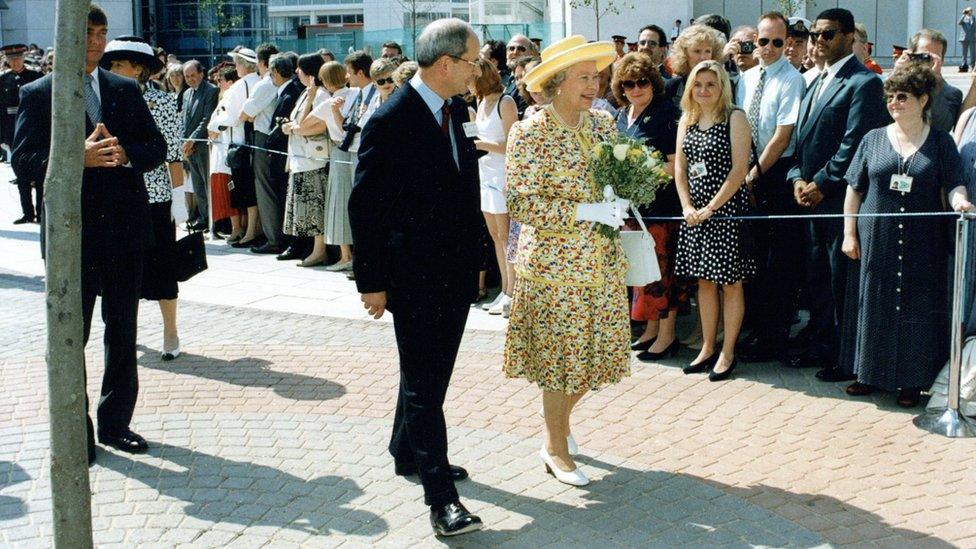
The Queen opened the newly-finished site on 19 July, 1996
Reporter Tim Davey has worked at the Bristol Post and Western Daily Press newspapers for more than 40 years and can still recall the sense of mystery around the new structures as they rose out of the land of north Bristol.
"People saw it the same way others saw MI5, GCHQ or like the UK's version of the Pentagon," he said.
"That is why weird stories abounded, such as there being crocodiles in the lake and missile launchers under the atriums.
"We heard about all sorts of staff facilities such as a dentist, a swimming pool, even a supermarket and to this day I don't know how many are true - if any!"
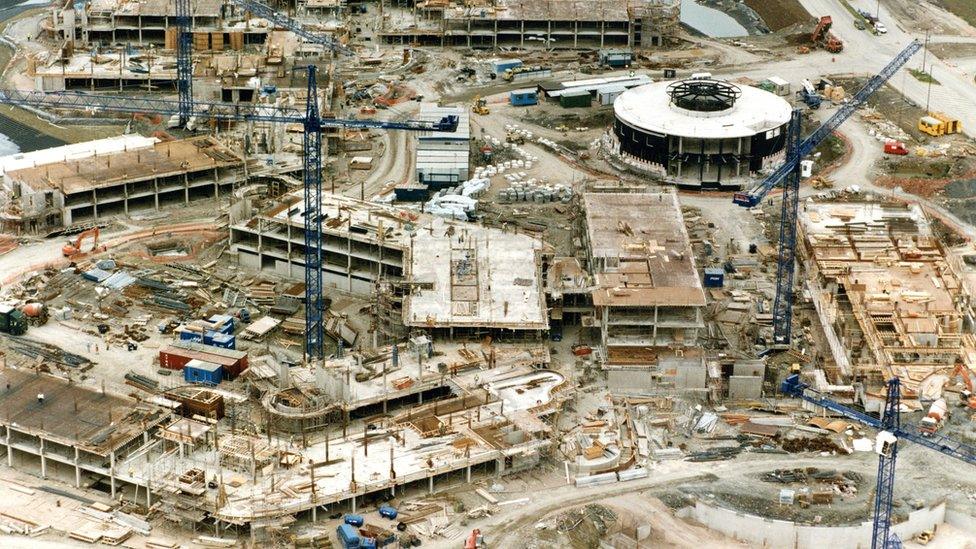
Abbey Wood was the biggest construction project in the UK in the early 1990s
There may not have been crocodiles in the lakes and there aren't missile launchers on the site but security is important because of the sensitive work that goes on at Abbey Wood.
But rather than install a high fence the complex is bordered by a lake which has become a wildlife haven for species such Canada geese as the years have passed by.
What may have helped spread the myths about what was coming to Abbey Wood was the futuristic design of the buildings built in a style developed by local architect John Rudge.
He said it was "phenomenally exciting" to work on what was the largest construction project in the UK at the time.
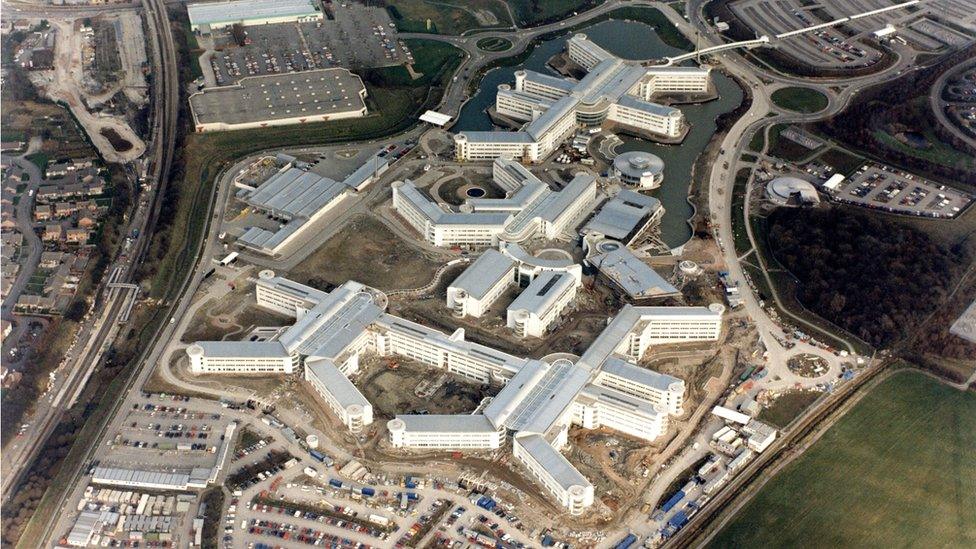
Some dubbed the complex the 'UK Pentagon'
"We wanted to build something visually stunning, with ground-breaking energy and environmental performance that met stringent energy and carbon dioxide targets," Mr Rudge said.
"The look of the site was a major factor in making it feel like part of the local community.
"That is why we battled so fiercely against there being a fence around the lake, which we believed was a good enough defence and we won the argument."

The MoD bought the site in 1991
Not everyone wanted to relocate to Bristol recalls Pete Ginnever who helped move staff from other MoD sites in Portsmouth, Weymouth and London.
"It's fair to say people were reluctant to move," he said.
"You can understand there was an awful lot of uncertainty. Thankfully people responded to the working environment very well."
Security guard Wayne Blake enjoys the site at its most peaceful once most of the staff have gone home.
"Abbey Wood is a different beast at night," he said.
"It's a wildlife sanctuary, you get badgers, foxes, rabbits and even deer. I have seen the space station going over and meteor showers - it's an amazing site."
Strange noises
Some myths remain at Abbey Wood - inspired by Stanley Farm.
Tucked away in the south-east corner of the site, it was a former farm that had fallen into a poor state when the MoD bought the land in 1991.
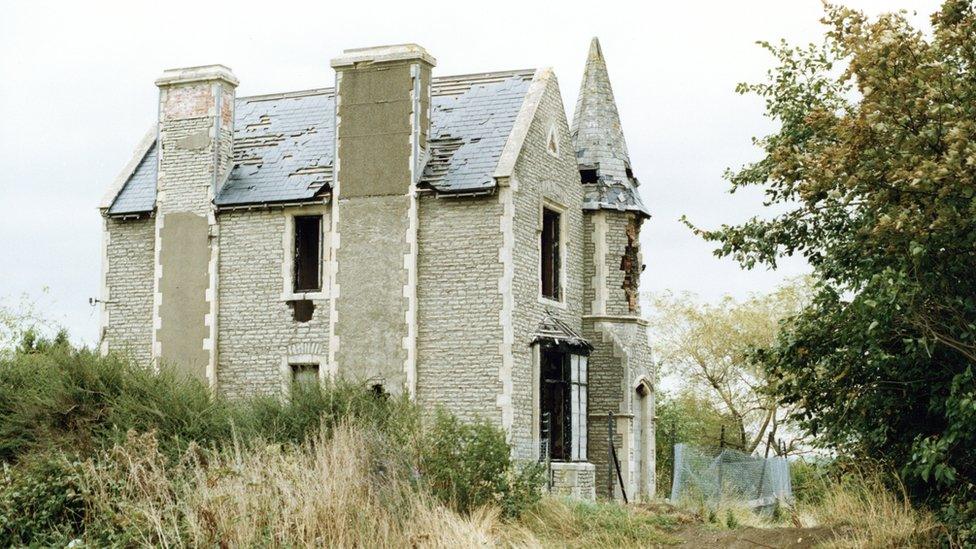
Stanley Farm, now restored, is rumoured to be haunted
As a Grade I-listed structure it could not be demolished, so the decision was taken to restore it using stonemasons and carpenters and turn it into a training centre.
It has earned the nickname Spooky Farm, with several security staff over the years reporting ghost sightings and strange noises, leading some to believe it is haunted.
Laser weapons
From guns to tanks and planes, staff at Abbey Wood are tasked with working with companies which supply military equipment, with robotics, futuristic radars and lasers playing an increasing role.
Defence Equipment and Support (DE&S) CEO Sir Simon Bollom said: "I'm incredibly proud of the diverse workforce at MoD Abbey Wood who are committed to supporting our armed forces.
"It's a very exciting time in defence and we are enjoying the challenge of working with industry to innovate and deliver cutting-edge equipment at pace to stay one step ahead of our adversaries, while also delivering best value to the taxpayer."

Filton Abbey Wood
Construction began in September 1993 and cost £254m
The site is home to the MoD's procurement arm DE&S which is responsible for delivering more than 80% of Britain's military equipment
The site is 98 acres (40 hectares) - the equivalent of 50 football pitches - and contains 5,000 trees
About 5,500 people worked at Abbey Wood when it first opened, rising to 8,500 just before the Covid-19 pandemic. They are a mixture of civil servants and military personnel

The half-moon shapes of the office buildings led to them being dubbed 'croissants'
It remains the biggest employer in south Gloucestershire
There were plans to include a swimming pool but they were scrapped. The site does have a hairdresser and a nursery though
Filton Abbey Wood rail station was opened in 1996 to allow employees to travel to work by train

Follow BBC West on Facebook, external, Twitter, external and Instagram, external. Send your story ideas to: bristol@bbc.co.uk , external
Related topics
- Published9 July 2021

- Published23 June 2021

- Published22 December 2020
